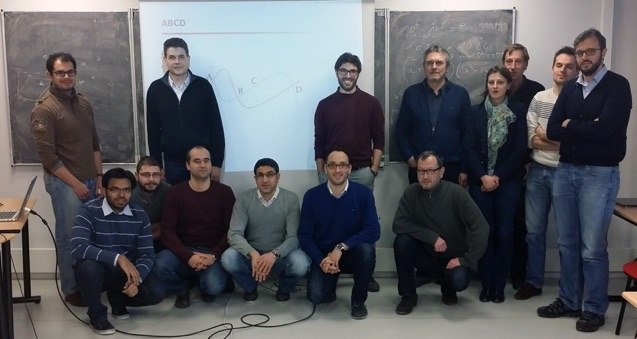ANR ABCD PROJECT
The pervasiveness of information and communication technologies is driving a social evolution, whose tangible effect is observable in human mobility behavior and digital usages. Originally, the Internet was conceived to serve fix and sedentary usages, while current trends clearly show that future Internet users will be increasingly mobile and nomadic. As of Institut Mediametrie, in September 2012, 56% of French mobile phone users were smartphone users, and almost 50%of mobile phone users effectively connected to the Internet with their phone. This trend is accelerating with already 38% of smartphone users accessing the TV on their phone, and 32% of users have subscribed a plan with “unlimited options” providing a wide access to content and digital services.
The extremely rapid pace at which this evolution is taking place practically manifests through poor service availability, and represents a major impediment for advanced services. The exponential growth of mobile Internet usages calls for a novel Cloud computing and resource-provisioning solution to offload the access networks, which need to be geographically distributed and temporally adaptive. Recent studies, showing that mobile user movement patterns can be accurately predicted by analyzing samples of their displacements, suggest that forecasting network customer mobility and usages can play a major role to that end. However, the data consumption dynamics and their correlation with macroscopic user mobility behaviors are largely unknown today. The reason is the still insufficient coordination between traffic engineering, usage profiling and user mobility detection, and the lack of public exploitable access data traces.
In the ABCD project, we aim at filling this void, from both a fundamental and technological standpoint, with an interdisciplinary expertise of academic laboratories on Cloud networking (LIP6, UPMC), wireless access and mobile networking (Urbanet, INRIA) and socio-economic impact of telecommunications (SES, Télécom ParisTech), as well as of industry R&D on socioeconomic analysis of mobile networks (SENSE, Orange Labs) and on large-scale WiFi network management (Ucopia Communications). Thanks to Orange and Ucopia providing cellular and WiFi access data logs, our purpose is to define adequate solutions to capture mobility patterns, correlating mobility with usages for a mobile Cloud offloading architecture for telecom networks. This solution requires a reliable estimation of mobility and usages metrics for adaptive Cloud distribution and resource allocation. Indeed, the network efficiency might be very positively affected if selected Cloud servers could be proactively distributed close to identifiable rendezvous points regularly approached by masses of users, or along geolocated consumption flows adaptively determined. This solution aims to master “flash-mobs effects” while increasing network efficiency.
The usages we care about are mobile Internet services such as streaming, digital maps, social networks, and software updates. Mobile access networks commonly suffer upon smartphone software releases and during special events aggregating large masses of persons sharing similar interests (e.g., sport events), hence concurrently accessing similar services. Such events shall be detected in real-time so as to dynamically allocate network resources and move virtual machines close to access gateways. Cloud services can largely profit from such a distributed access: by hosting resources out of the user terminal, they enable remote processing and storage of personal data. Mobile equipment has notably limited computing and energy resources, and the presence of close-enough Cloud virtual machines and their adaptive migration along users’ displacements can allow computation offloading, grant important battery energy savings, while guaranteeing connection resiliency.
Adaptive Behavior and Cloud Distribution
Vers un réseau en nuage et mobile sensible aux usages





